“Inexplicably bad property photographs.” Q&A with Andy Donaldson
Following the conference “Creative Practices and Reflections on the Digital Image,” Marie Baab and Kevin Pauliks of the project Pictorial Picture Critique in Social Media talked with Andy Donaldson about his blog Terrible real estate agent photographs. In his blog, Donaldson curates ‘bad’ photos of properties that can be found on various real estate platforms. He describes his cutation as a “celebration of low standards and a lack of attention to detail.” In addition to his blog, Donaldson published three books on “Terrible Estate Agent Photos.” We asked him the following questions about the content of his blog and books:
KP: How did you come up with the idea of terriblerealestateagentphotos.com?
AD: Back in 2012, I was living in London, and was scouring property websites for a new flat. I was repeatedly struck by the low standard of photography that was being used (as well as the low standards of property) and by how many agents obviously thought they could save some cash by doing it themselves (“it can’t be that difficult, right?”). There were also countless examples where no care was taken to make even the slightest effort to ‘dress’ or stage the room in question – piles of laundry, dirty dishes, even sleeping tenants were often left in shot.
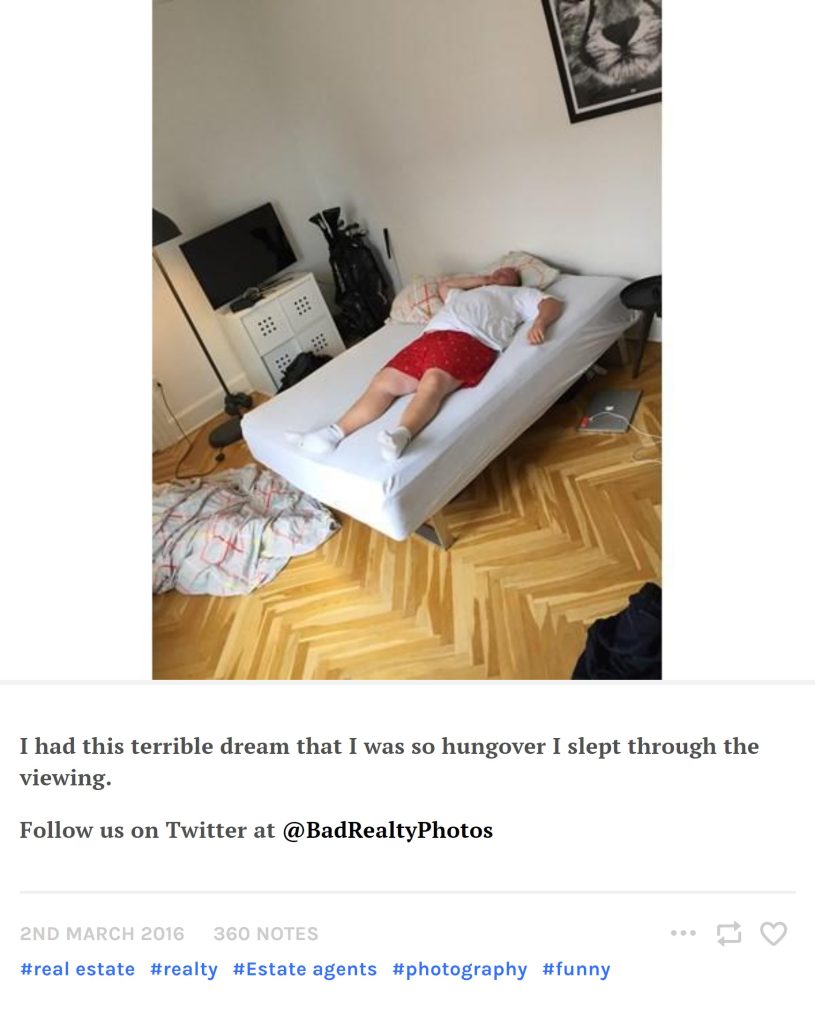
I was already working in Digital and Social Media at the time and had become aware of the extent to which the simple addition of a caption could take an image from being odd, strange, but unremarkable, to something genuinely entertaining. It was making me laugh, I hadn’t seen it done anywhere else, so the blog was born.
MB: What is the aim of your blog?
AD: To exercise my imagination and to make people laugh. But let me also say what it is not: It is not an attempt to ridicule or to belittle. We all make mistakes, and we all get things wrong sometimes, and some of the houses I’ve included over the years couldn’t be made to look beautiful by the best photographers in the world. Estate agents aren’t the target of the blog, which is lucky because many of my most vocal fans are estate agents themselves. Rather, the intention is to give people something to laugh about that is linguistic, visual, surreal, incongruous, or even scary – but neither political nor personal.
KP: In your blog (and book) you write that “out of these low standards can come great art.” At what point is a real estate agent photo ‘bad’ enough to be art?
AD: I think that since Duchamp’s “Fountain” any object, image, sound or text, repurposed to create emotions other than those originally intended can be considered art, and with a straight face I can say that my posts fall into this category. It’s a happy coincidence that I’m not alone in holding that opinion, and in 2018 several posts from my blog were exhibited at Pavillon 1 of the Hamburg Photographie Triennale, for which I will always be grateful to their impeccably tasteful curators. The point at which a photo becomes bad enough to be art is simply the point at which it someone decides to send it to me. I have a database of 1,000s of such images and every one of them is a potential post for the blog.
KP: Do you understand your blog as (art) criticism? What exactly do you criticise?
AD: If I’m criticising anything I think it’s low standards, and also perhaps “bad” taste, but I’m not sure “criticise” is the right word. Saying something is bad, or crap, or professionally sub-standard isn’t in itself funny. What I try to do is take advantage of the low standards or questionable décor on display and pretend to explain it. Saying a glittering green bathroom is horrible isn’t funny. Suggesting it’s like that because the owner saves on air fresheners by assaulting everyone’s other senses might, I hope, raise a laugh.
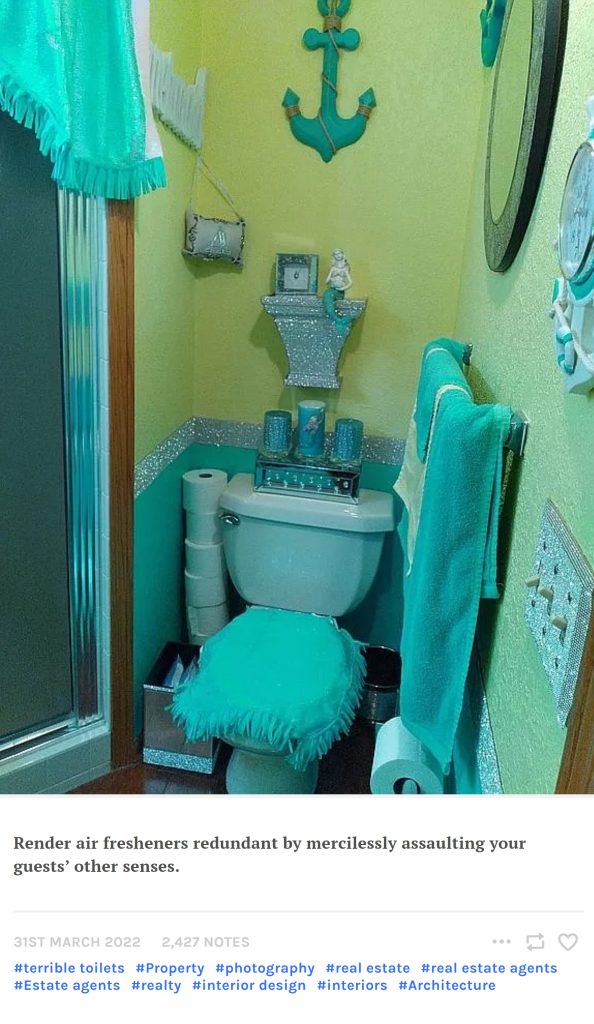
KP: Where do you get the photos from? How do you decide which photos to post?
AD: At first, I trawled property websites looking for examples, but within a few weeks of going live with the blog I was being sent them from all over the world faster than I could publish them. So, everything I’ve posted since then has been submitted to the website, or via social media. The process of choosing an image from the 1000s of submissions is simple and entirely random – there’s no browsing, and I don’t go looking for specific themes or types of image. If the image that comes up doesn’t suggest a caption or treatment within a minute or so I try another. Some images have come up several times over the years but I can’t quite get them right, so they go back in the folder and maybe I’ll be inspired next time.
KP: Is it important for you that the photos actually originate from real estate marketplaces? If so, how do you verify their origin?
AD: Yes, that’s actually really important, otherwise the blog is just unverifiable user-generated content. If an image is submitted without a link, or no agent’s logo on the image, or I can’t find the source online, I tend not to use it. I’m sent lots of images taken by agents of something funny or shocking they’ve seen in a property that day, but if the image hasn’t been taken for the purposes of marketing the house, I don’t use it.
MB: An emphasis of your blog lies on your critical and creative comments.
Do you think your blog could work without textual elements and only visual content?
AD: No, I don’t think it would work. Without the captions it would be a very different blog, and I suspect it would be less popular. The captions allow for anthropomorphism, visual comparisons, surrealism, or the introduction of a different point of view. Taken on their own, many of the images I use are unremarkable in their own right, and need the addition of a secondary element to create the humour.
MB: Do the photos have a stand-alone quality or do they only work in curation?
AD: Some of them definitely have a standalone quality, for better or worse. Sometimes I come across one that really doesn’t need a caption, such as the interior shot from 2013 that included a horse:
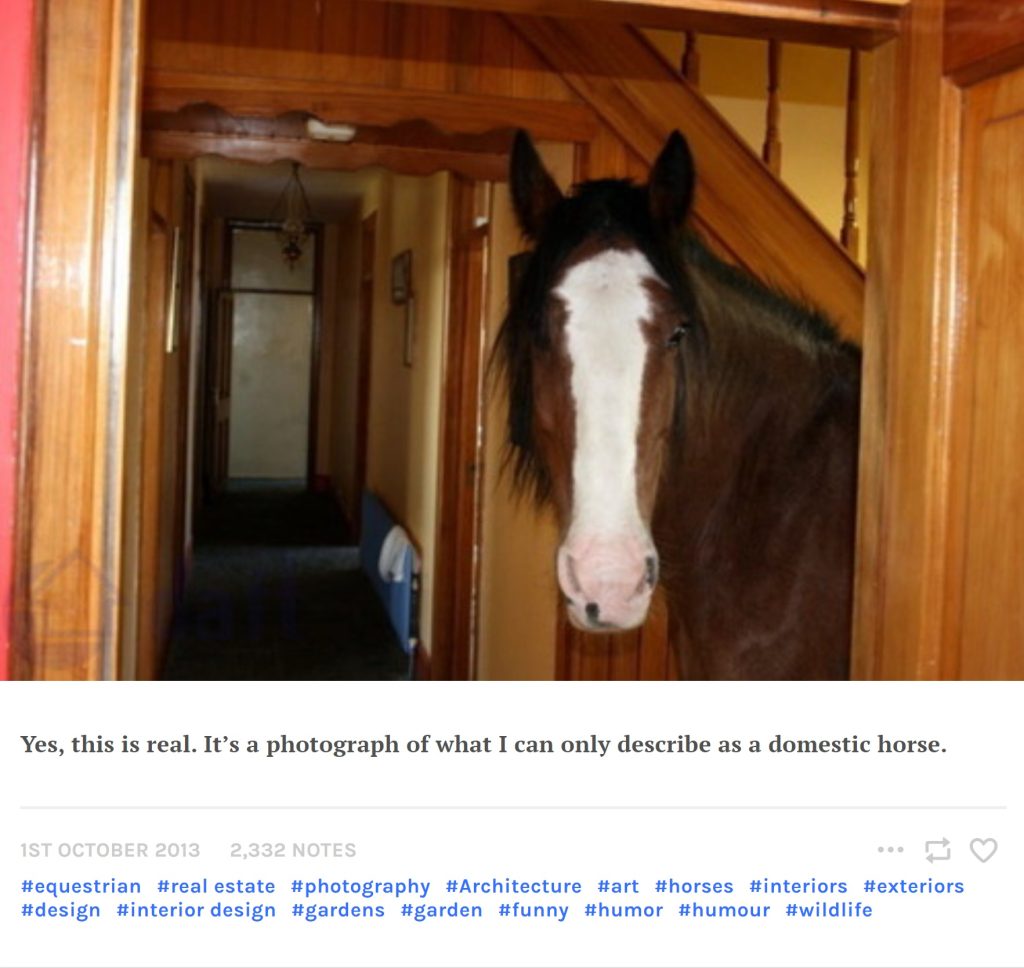
Some images only work in conjunction with others, as a comparison without which there would be no joke:
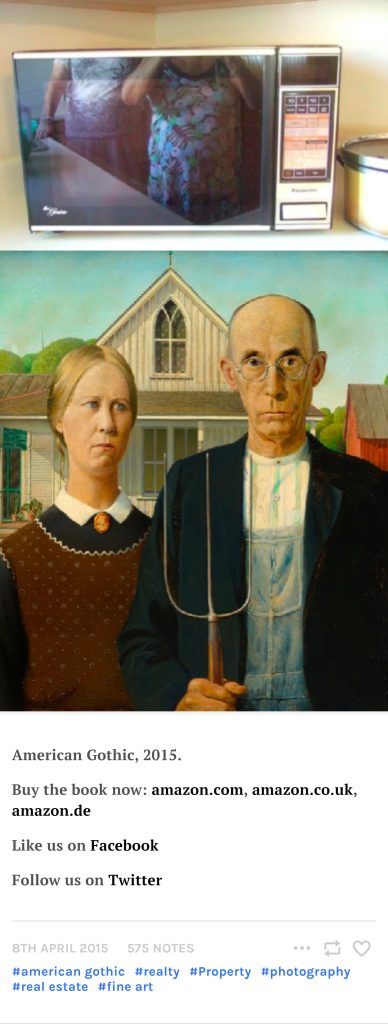
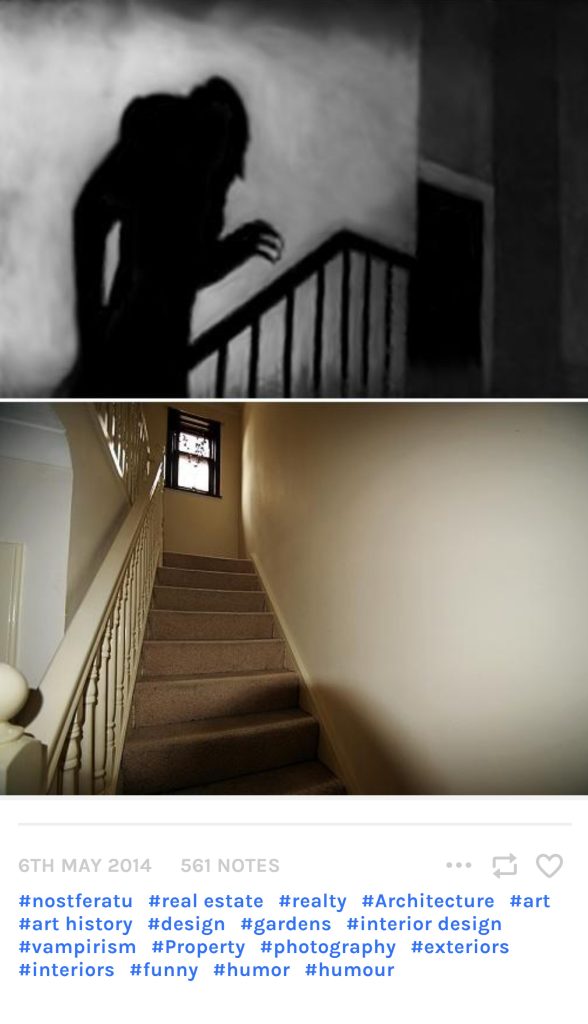
MB: You have quite a follower base on Tumblr, Twitter, Facebook and Instagram.
How do you engage with your community?
AD: Yes, across these platforms I think there are around 200,000 followers. I’ve always wanted the blog to maintain its simplicity and a focus on doing a single thing over and over, and doing it well. So, on the blog itself I only ever publish ‘broadcast’ posts, in the format people expect. I don’t use the blog to engage with followers. I’m occasionally able to respond to a submission or answer questions, which I do using private messages. This helps keep the public content consistent, simple, and uncluttered. An occasional exception to this rule is Twitter, where the format and ephemeral nature of the platform allows for genuine engagement without diluting the more regular content.
KP: You published three picture books, two of them in Germany. How did it come to that?
AD: When the blog first took off, I wrote a full proposal for the first book and got myself an agent. He did a fantastic job and soon it had been picked up by Random House (now Penguin Random House). The German market requested a translated version, which sold well enough that a second was commissioned in 2016. It’s a fact that the blog has always been particularly popular with German audiences, which I attribute to the German public’s unerring ability to identify genius when it presents itself.
KP: Which photos from your blog did you choose for your books? And, why?
AD: I think I only used around 10 posts from the blog when we put the book together – it made more sense to create a book full of new content rather than just re-using material that was already available online and familiar to the audience. So, for each book the process was simply writing approximately 200 new posts without repeating a joke, which was not as easy as it may sound.
KP: Thank you for the interesting insights into these both terrible and artful real estate agent photographs.
Schreibe einen Kommentar
Du musst angemeldet sein, um einen Kommentar abzugeben.